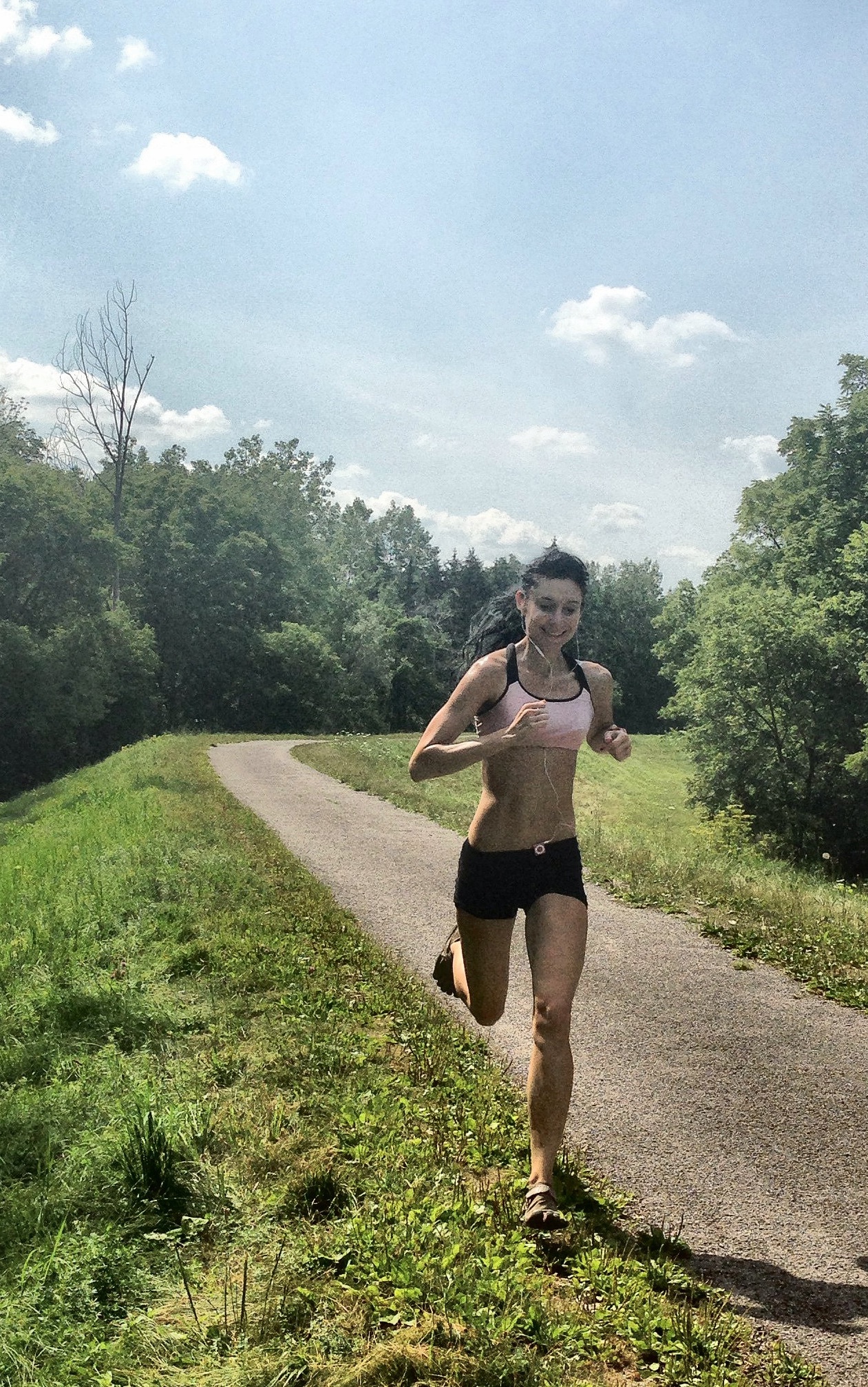Countless runners experience shin splints when they switch from heel striking to forefoot striking, but how can you prevent shin splints from happening when learning forefoot running –the safest style of running? The answer will surprise you, but it is to avoid running too slow!

How Can You Prevent Shin Splints When Running
Runners can rapidly learn forefoot running, but tend to execute it at slower speeds. However, strategically running too slow can backfire and foster medial tibial stress syndrome, new research suggests.
 Bartosik et al. (2012) found that slow speeds were a legitimate cause of medial tibial stress syndrome in runners. The researchers explained that runners were more likely to have increased ankle dorsiflexion at touchdown at slower running speeds than at faster speeds.
Bartosik et al. (2012) found that slow speeds were a legitimate cause of medial tibial stress syndrome in runners. The researchers explained that runners were more likely to have increased ankle dorsiflexion at touchdown at slower running speeds than at faster speeds.
One way to look at it is in forefoot running, ankle dorsiflexion at touchdown is the ‘brake’ and increased ankle plantarflexion at touchdown is the ‘pedal’. The less you brake, the less you strain your legs when forefoot running.
Increased ankle dorsiflexion upon touchdown also causes a big spike in muscle activity in the tibialis anterior, implying that this extra work might fatigue the shins.
What is more is that many forefoot runners who ‘slog’ (slow jog) exhibit heel strike-like mechanics, such as increased ankle dorsiflexion upon touchdown. Forefoot runners without medial tibial stress syndrome do not display any of these mechanics and brake less, implying that lower leg pain is tied specifically to heel strike running, not just running too slow.
Other reports have found that runners no longer exhibited heel strike-like mechanics during speed sessions –in this case, preventing the ankle from dorsiflexing. It makes sense that if you run faster, you have a limited capacity to apply the brakes.
The Take Home Message
We are used to thinking that running fast can sometimes have negative consequences. For runners who heel strike, speedwork becomes aversive and tends to sap the energy out of the leg. However, forefoot runners who run very slow have mechanics associated with heel strike running and injury patterns are also similar (i.e. shin splints).
When it comes to treating and preventing medial tibial stress syndrome, it really boils down to accepting the fact that running faster does not necessitate injury in forefoot running. Rather the increase in speed shapes a biomechanical template of low-impact landing behavior.
More From Run Forefoot:
- How to Run Faster When Forefoot Running
- How the Calves Function in Forefoot Running
- Why is Loading Harmful?
- Best Tips and Resources on Barefoot Running
- Forefoot Running Shoe Review
- Pre-Run Fuel
References:
Bartosik KE, Sitler M, Hillstrom HJ, Palamarchuk H, Huxel K, Kim E. Anatomical and biomechanical assessments of medial tibial stress syndrome. J Am Podiatr Med Assoc. 2010;100(2):121-132.
Bretta Riches
BSc Neurobiology; MSc Biomechanics candidate, ultra minimalist runner & founder of RunForefoot. I was a heel striker, always injured. I was inspired by the great Tirunesh Dibaba to try forefoot running. Now, I'm injury free. This is why I launched Run Forefoot, to advocate the health & performance benefits of forefoot running and to raise awareness on the dangers of heel striking, because the world needs to know.
Latest posts by Bretta Riches (see all)
- Does Foot Strike Really Matter in Running? YES! - 17/04/2024
- Heel Lifts Increase Injury in Runners - 16/04/2024
- Are Minimalist Shoes Good for Seniors? YES! - 14/04/2024

Speed is a relative term. What would be considered fast enough. 13km/hr is fast for me but others not so.
I’m confused. I’m a beginner about to start c25k wearing vff’s so I’m not going to be able to run fast. Am I going to cause damage?
I tend to agree. When I was competing in high school and college, I ran a lot of faster intervals on the track while wearing thin spikes. I never got injured doing that. All my injuries occurred as a result of high-mileage (i.e., slower) training on the roads and trails. I used think the minimalist nature of the spikes (virtually no heel lift or cushioning, extremely flexible soles) was the reason I never got hurt while running intervals. But maybe the (much) faster pace also was a factor. After all, your running mechanics are completely different at faster paces as compared with slower paces.
ob8vkk
e4r64b
pluo47